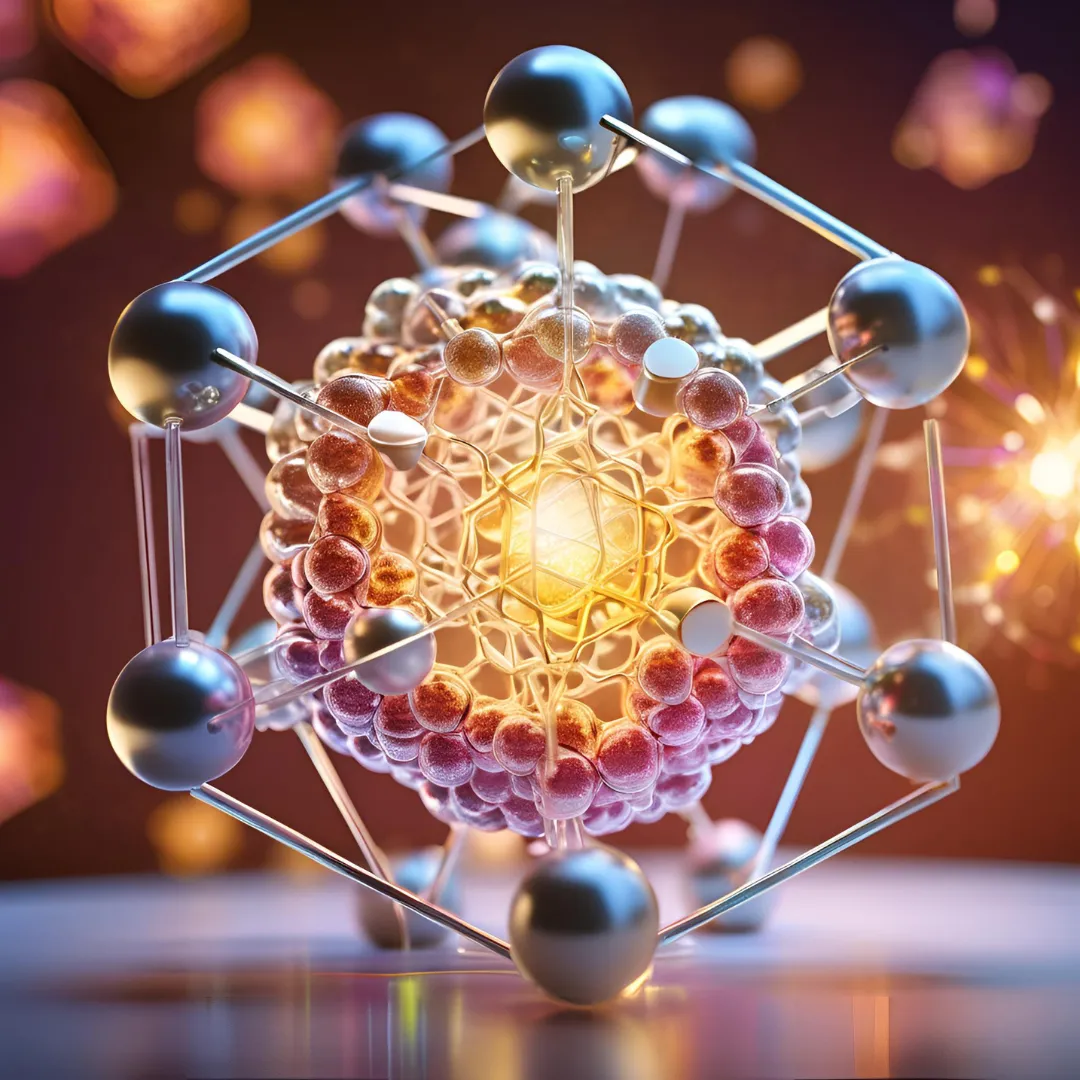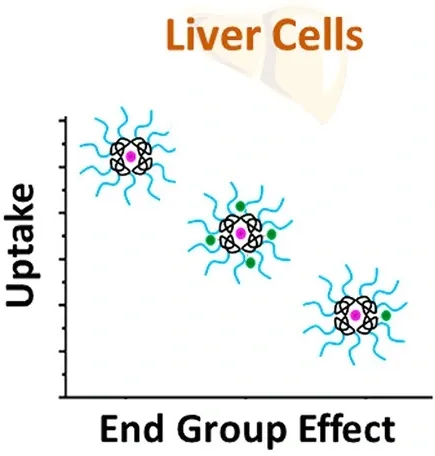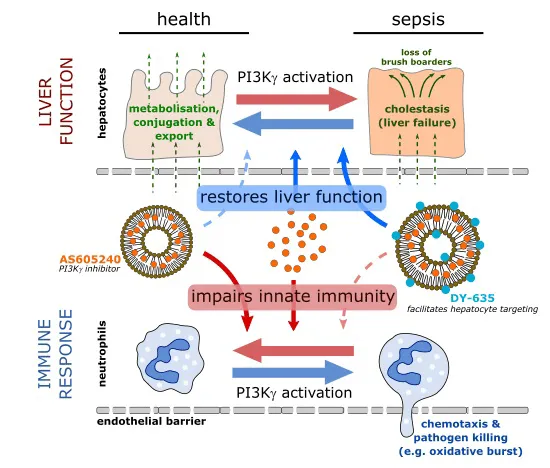Translational Nanomedicine for Targeted Therapy
Our cutting-edge research in medical innovation and translational nanomedicine focuses on developing precise drug delivery systems. We aim to revolutionize therapeutic approaches by harnessing nanoparticles to transport novel medications directly to infection sites, thereby enhancing treatment efficacy and reducing systemic side effects. These drug delivery modalities share similarities with pathogens in the eyes of the immune system. Investigating these interactions paves a prosperous reseach area.
Selected Publications

Cell type-specific delivery of short interfering RNAs by dye-functionalised theranostic nanoparticles
How to deliver Nanomaterial to hepatocytes? A simple dye makes it possible. Explore how inorganic, fluorescent probes guide nanomedicine to hepatocytes to aid personalized sepsis therapy.

Stealth Effect of Short Polyoxazolines in Graft Copolymers: Minor Changes of Backbone End Group Determine Liver Cell-Type Specificity
Dye-loaded micelles of 10 nm diameter formed from amphiphilic graft copolymers composed of a hydrophobic poly(methyl methacrylate) backbone and hydrophilic poly(2-ethyl-2-oxazoline) side chains with a degree of polymerization of 15 were investigated concerning their cellular interaction and uptake in vitro as well as their interaction with local and circulating cells of the reticuloendothelial system in the liver by intravital microscopy.

Targeted delivery of a phosphoinositide 3‐kinase γ inhibitor to restore organ function in sepsis
New research reveals a critical link between liver health and immune function in infections. Jaundice—the yellowing of skin and eyes caused by bilirubin buildup—often signals serious liver stress during infections, driven by breakdowns in liver cell membranes. A groundbreaking mouse study found that blocking the PI3Kγ protein prevents this membrane damage and preserves liver function.